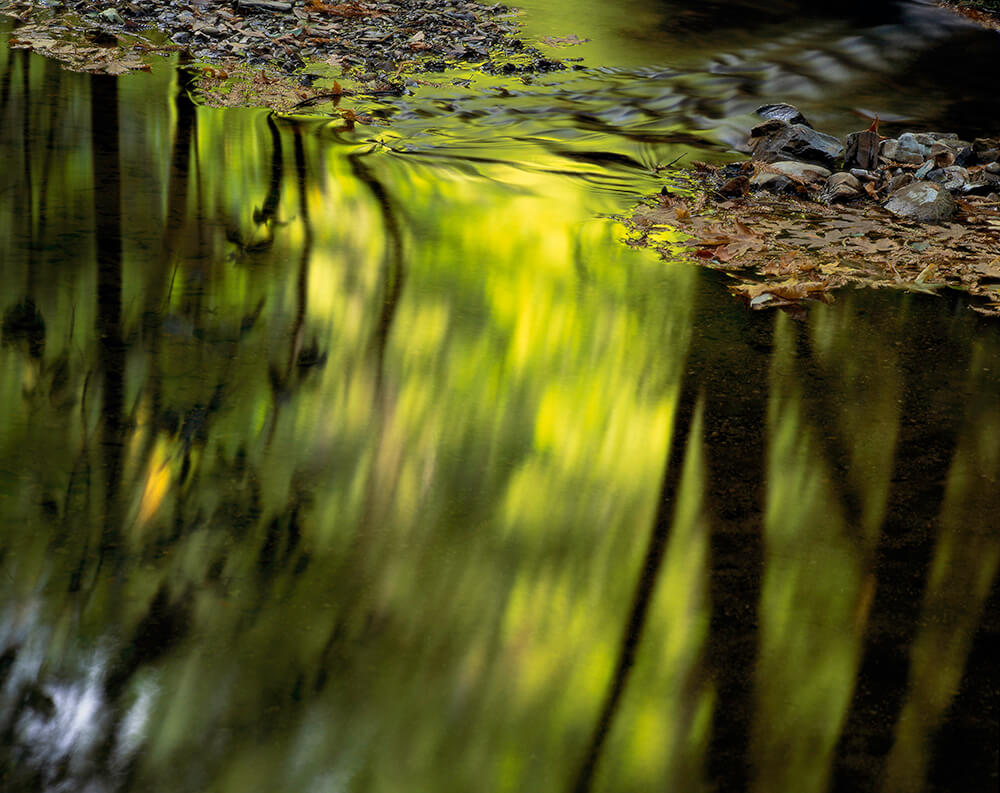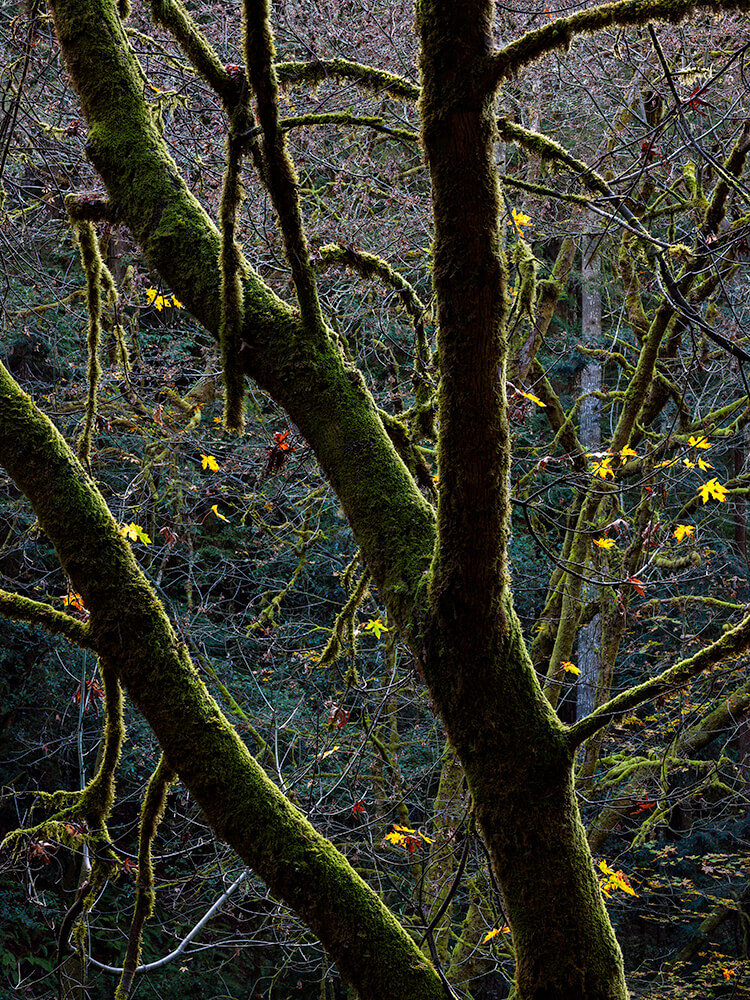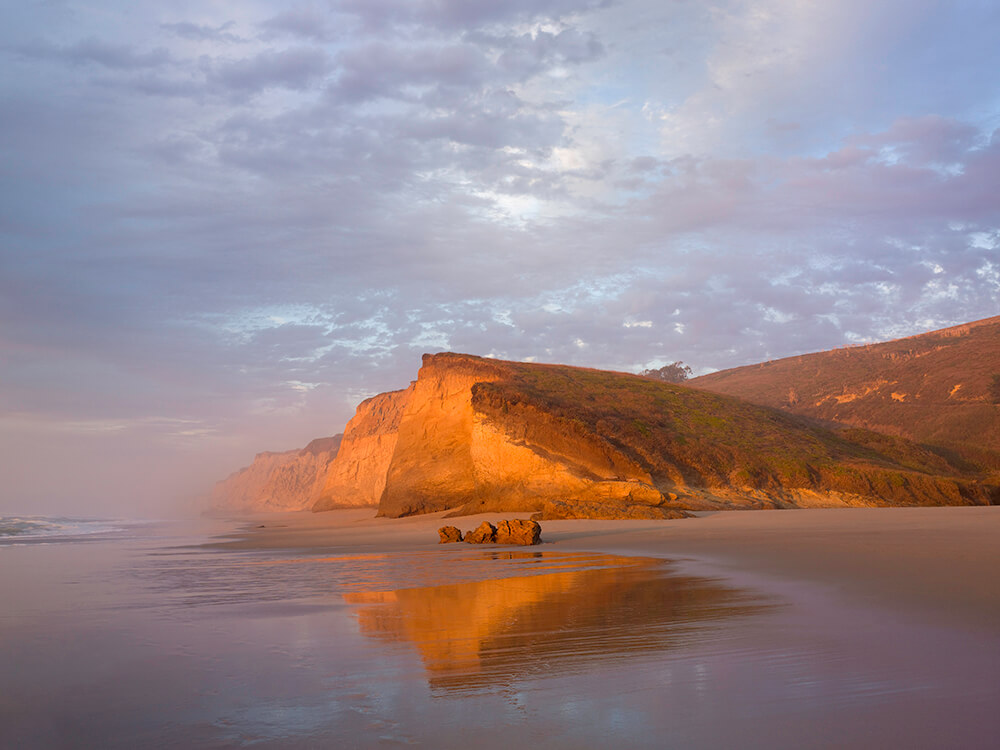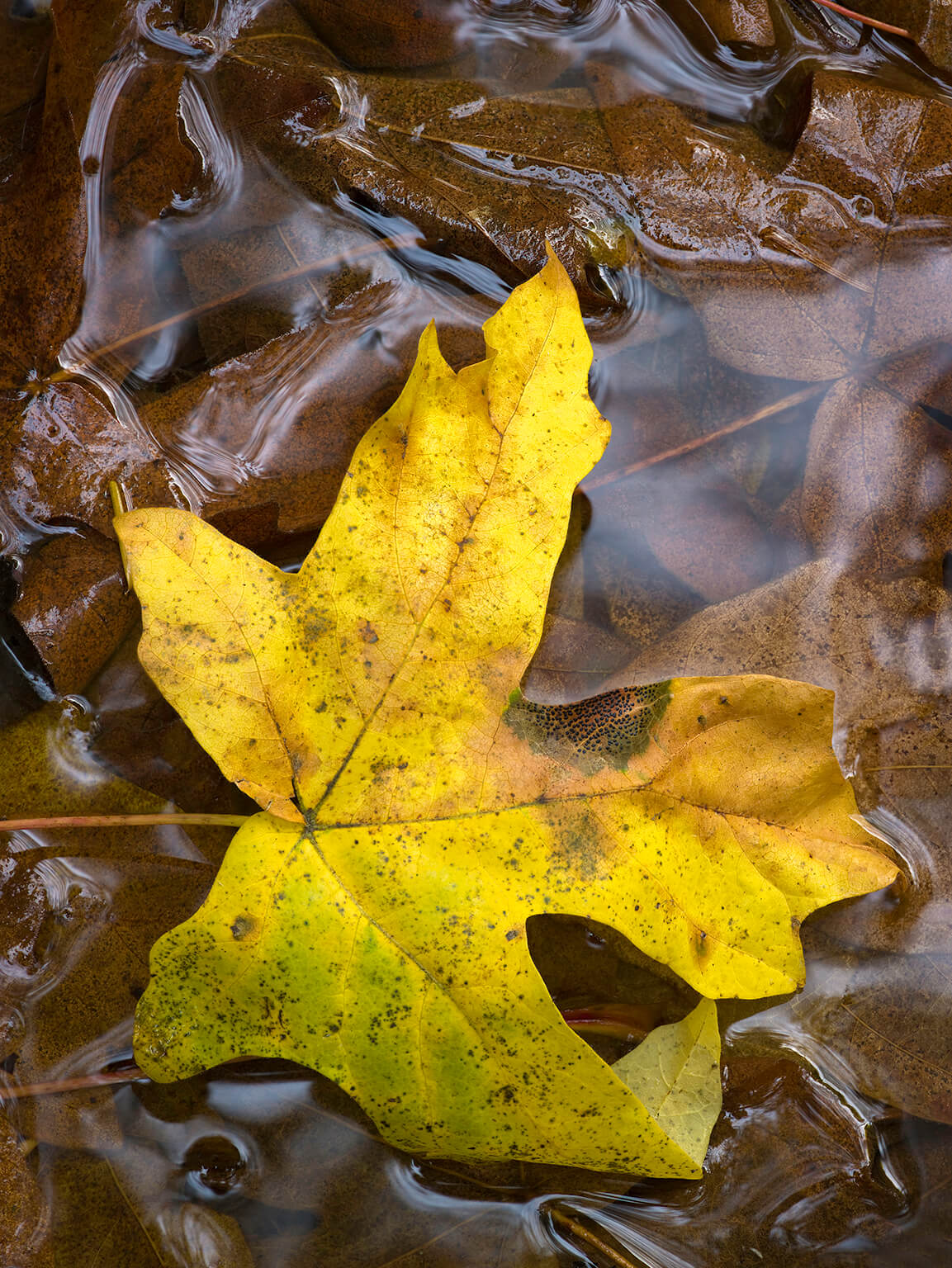Words by Sheri Baer and David Hibbard
Behold the blaze of colors and quiet moments that fall evokes, as captured by Menlo Park landscape photographer David Hibbard. Born and raised in Los Angeles, David ventured north to attend Stanford University and has lived on the Peninsula ever since.
David traces his love of the natural world back to his early childhood, much of which he spent on his grandparents’ citrus ranch. “There were orange groves in every direction and then beyond that were the mountains,” he recalls. “There were no fences. I had the run of the ranch and I was always out exploring.”
Although he got his first camera, a Kodak Brownie, when he was seven, it was looking through the viewfinder of a Pentax SLR when he was in high school that cemented David’s pursuit of a wilder path. After a 20-year career in technical writing, he returned to his first love, photography. Along with this homage to Peninsula autumn, David shares insights into his lifelong quest to engage with the natural wonders around us.
A DIFFERENT PERSPECTIVE
Early in life, I got into the mental habit of “framing” what I saw. A congenital eye disorder left me with flattened vision. I can see the height and breadth of things, but not their depth. I was always looking at and through windows, marveling at how they parsed the chaos of the visual world and made it more comprehensible. When I was a young child, I did not question why my two eyes rendered the world so differently. My left eye saw everything with great clarity: the smallest detail resolved to exquisite sharpness. My right eye, on the other hand, turned the world into a lovely Impressionist painting. Shimmery light and vibrant color, but no hard edges anywhere. To live in the world, I must use my ‘good’ eye; thus, it dominates. It is the magic of light and color, what I principally see with my “inferior” eye, that pulls me out of the everyday world and into art.

LOOKING THROUGH A MAGIC LENS
As a child, I drew and painted constantly. I would take snapshots with my Brownie camera on family vacations, but I didn’t take photography seriously until I happened to look through the viewfinder of a Pentax SLR. The bright image that I saw, so exquisitely rendered on the ground glass, enchanted me. It was a magic lantern view of the world. I knew, in that instant, I had to become a photographer. I connected with that flattened, luminous image because it was how I saw the world. Although my brain cannot resolve what it receives from my two eyes into a coherent vision, I am able to do that through photography, and perhaps that is why photography has such a powerful hold on me. Out in the open air, the camera is a portal into a dimension I cannot see. I am often told that my photographs convey a strong sense of depth and space, but that is something I cannot fully appreciate.
PHOTOGRAPHIC INFLUENCES
When I started out in photography in my 20s, I modeled myself after Ansel Adams, whom I had met and who had encouraged me. I first encountered his work on a family vacation to Yosemite. We were staying at the Ahwahnee, and in the dining room, the menus always featured a beautiful, full-page photograph by Ansel. I was so taken with his photography that I wanted to steal one of the menus. After I met Ansel, I built a darkroom and taught myself how to make expressive black-and-white prints by poring over Ansel’s highly technical Basic Techniques books. Elliot Porter, a pioneer of color photography, was another important influence. His exquisitely detailed photographs of New England’s forests blew my mind when I first saw them. Ansel told me that I had a better eye for black-and-white than color, but over time I have found that I love color photography more. Perhaps my childhood immersion in painting accounts for this. Whatever the explanation, I’m having a ball with color.
SPECIAL PLACES
Throughout my life, specific places have been important to me. I can return to them again and again and never feel that I’ve had my fill of them. The very first is Point Lobos, which I encountered as a small child. The beaches of Northern California, from San Mateo to Mendocino County—all within a day’s drive of my home—have been my main focus in recent years. Most special of all, perhaps, is Gazos Creek, a wooded coastal canyon that I discovered when I was a student at Stanford. Recently, I went through my records and counted how many days I’ve spent at Gazos Creek since the mid-1990s, and the number turned out to be 340. That’s almost a year of my life. All of these are places where I can immerse myself—lose myself, if you will. Through photography, I try to convey the wonderful alchemy of light and weather I often encounter there.

OUT IN THE FIELD
I strive to get out with my camera at least once a week. I follow the weather closely, checking the forecasts up and down the coast. Weather brings the most interesting light; I like to work on cloudy or foggy days—or when a storm is rolling through. I depart well before dawn so I can catch the first light, and I usually work the entire day, pausing only to eat a bag lunch. I carry a backpack that holds a camera body and three or four lenses, and over my shoulder I sling a heavy tripod. All of that can weigh as much as 35 pounds, depending on how much gear I decide to bring that day. I always have a destination in mind once I’m on the road, but I assess the light and weather while I’m driving, and sometimes I decide to go elsewhere based on what I’m seeing. I think of it as chasing light.
WHAT CAPTURES MY EYE
At the beach or on the trail, I’ll just start walking. I try to keep an open mind and heart—and let the landscape speak to me. It’s almost always the quality of light that draws me into a scene. The light can be dramatic or subtle, but if it strikes the right chord in me, I will stay and work with it as long as it persists. If the sky, for example, is full of beautifully illuminated clouds that are forming and reforming, making all kinds of glorious shapes, I might stay at that spot for an hour or more, observing the clouds and making photographs as the spirit moves me. When my days in the field are like that, I’m happy as a clam.
THE DIVERSITY OF THE PENINSULA
We have such an abundance of landscapes and ecosystems here: the Bay and its wetlands; mountains high enough to receive an occasional dusting of winter snow; beautiful forest lands and open, rolling grassland; superb beaches and magnificent coastal vistas. I’m hard put to think of another place that I know of with all of that in one package. We are blessed that so much of it has been preserved. Some of our open space preserves are just minutes away from our house, and the coast is less than an hour’s drive. I often feel as if the natural world, with all the miraculous sights it has to offer, is but an extension of our backyard.

THE WONDERS OF FALL
Well, for sure, I’m drawn to the color. In our coastal canyons, the alder leaves and redwood fronds stay green, but the maple leaves turn yellow and even into red, creating a vibrant color contrast between warm and cool. Then too, I love the quality of the light as the days get shorter. The sun is lower in the sky and the light is not as intense as it would be, say, in midsummer. At Gazos Creek, the sun barely peeks in during the middle of the day, selectively painting the lower branches and leaves with light as it filters through the forest canopy. On our beaches, late in the afternoon, the coastal bluffs turn golden as the sun eases down to the horizon. Even the modest neighborhood where I live seems transformed by the autumn light. The light has a pervasive softness that graces everything. From mid-October into February, the light is magic.
A JOURNEY WITH LANDSCAPE PHOTOGRAPHY
Photography gives me a great excuse to be out-of-doors. I am grateful that I live close to so many beautiful places, and that I have the time and ability to photograph, which I intend to do as long as I’m physically able. My photographic journey has blossomed since my retirement. I’ve taught classes in photography, led field workshops, taken workshops, started two photography groups, made some wonderful friendships through photography, exhibited my work and published a monograph of landscapes, Natural Gestures. I’m currently working on a new book that will feature my recent coastal photography. As always, I look forward to my next field session, which, as I write this, happens to be tomorrow.


